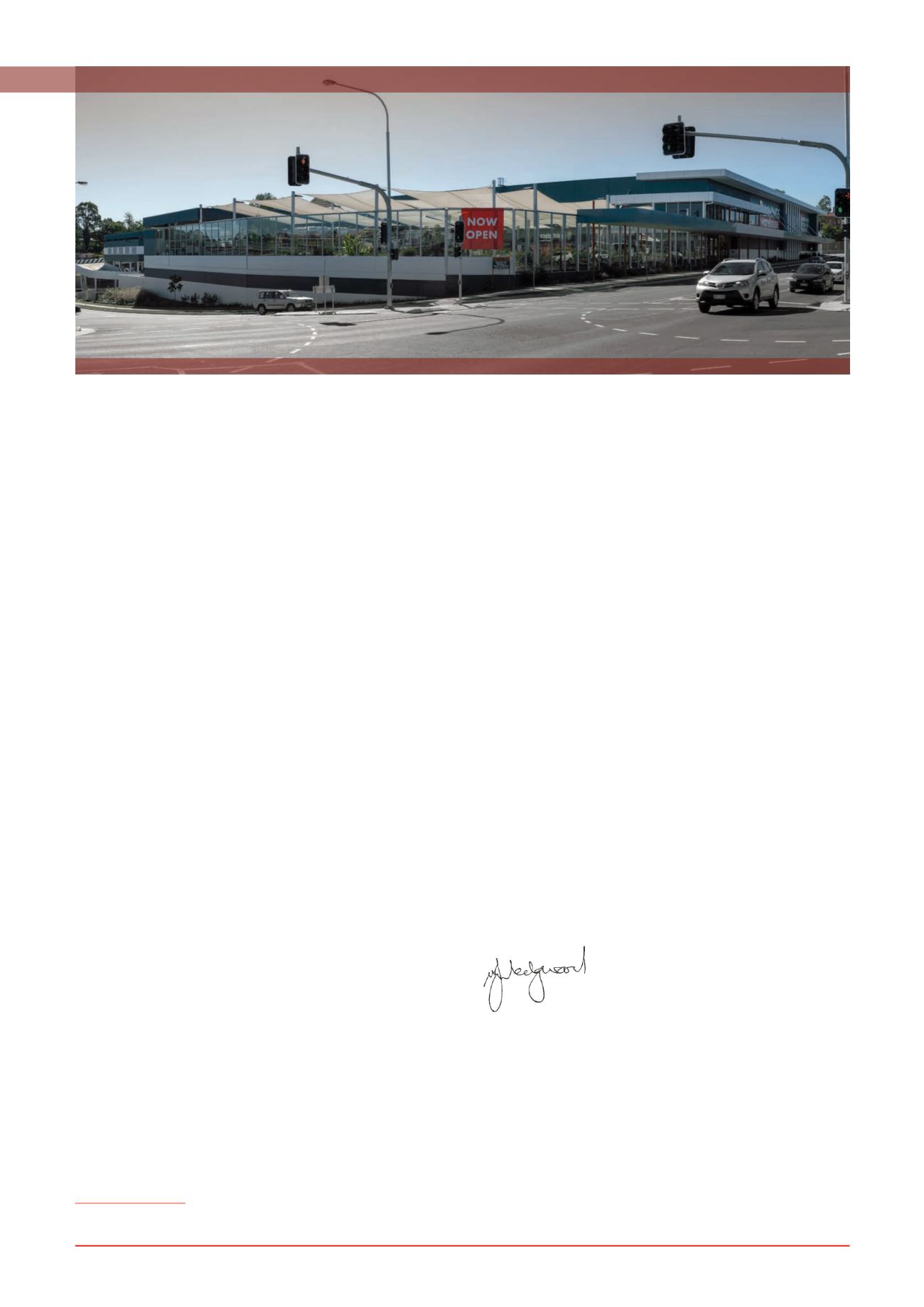
BWP TRUST ANNUAL REPORT 2015
West Ipswich, QLD
9
market including: household disposable income, renovation
activity, housing churn, value and formation, weather, lifestyle and
demographic trends, government activity and technology
1
.
The market accounts for both consumer and commercial customer
demand and includes: hardware and fixings, tools, plumbing, building
materials and supplies, garden and landscaping supplies, lighting,
paint, kitchen, laundry and bathroom supplies, gas appliances, floor
and window coverings, outdoor furniture, storage and housewares.
There is a wide array of competitors operating from a variety of
different formats including: category specialists in plumbing, electrical,
lighting, timber and garden supplies; hard goods mass merchants,
suppliers direct-to-market, home improvement products sold in
discount department stores and supermarkets, and other small and
large format home improvement retailers.
RETAILING MARKET AND TRENDS
The Trust’s customers are predominantly sellers of retail goods or
services in the home improvement & outdoor living, office supplies,
outdoor leisure, and electrical and small appliances categories.
Economic, technological, demographic and other trends that affect
retailing generally, or certain aspects of retailing, may impact our
customers from time to time. While the Trust’s rental income is not
directly linked to the sales turnover of the retailers, difficult retailing
conditions or structural changes in retailing can impact on the
demand for retailing space, affecting market rents, and in some
cases may affect the longer term viability of some retailers.
Retailing continues to evolve rapidly, in line with changing customer
needs, and also changes in technology, supply chains and sourcing.
Prime large format retail and home maker centres remain important
as a relatively low cost and structurally adaptable format, for
those retail business models. The quality of the Trust’s property
investment portfolio, with its large, prominently located sites means
that generally these should continue to be preferred locations for
retailing or provide potential longer term alternative uses.
RISK CONSIDERATIONS
The Trust is well positioned from a risk perspective with the
majority of its counter party exposure to Wesfarmers Limited
(A- S&P rating, A3 Moodys rating). The Trust’s assets comprise a
1
Source: Wesfarmers Strategy Briefing Day, 20 May 2015, page 76
geographically diverse portfolio of large format retail and industrial
properties, generally with long term leases in place (100 per cent
occupied at 30 June 2015, with a portfolio WALE of 6.6 years).
The Trust’s capital structure (preferred gearing range 20 to 30
per cent) takes into account the dynamics of the property
investment portfolio, and the lease terms of each asset.
The key economic risk for the Trust relates to interest rate
movements, and the impact on property capitalisation rates, and
the cost of debt funding. All investment proposals are evaluated in
relation to longer term return objectives, which take into account
interest rate cycles. The interest rate impact on debt funding is
managed with Board approved levels of interest rate hedging.
The Trust actively manages residual exposure to environmental
risks, including climate related weather events such as flood and fire,
which are limited to periodic localised incidents. The Trust undertakes
detailed due diligence on property acquisitions to fully understand
levels of site contamination prior to committing to purchase.
The Trust does not consider there to be specific social risks to
which it is exposed, but remains vigilant in terms of broader
retailing trends, and the business direction of its major customers.
BWP’S OPERATIONS
Further information regarding the operations of the Trust is
included in the Outlook, Our property portfolio, and Sustainability
sections on pages 10 to 18.
MichaelWedgwood
Managing Director
BWP Management Limited


